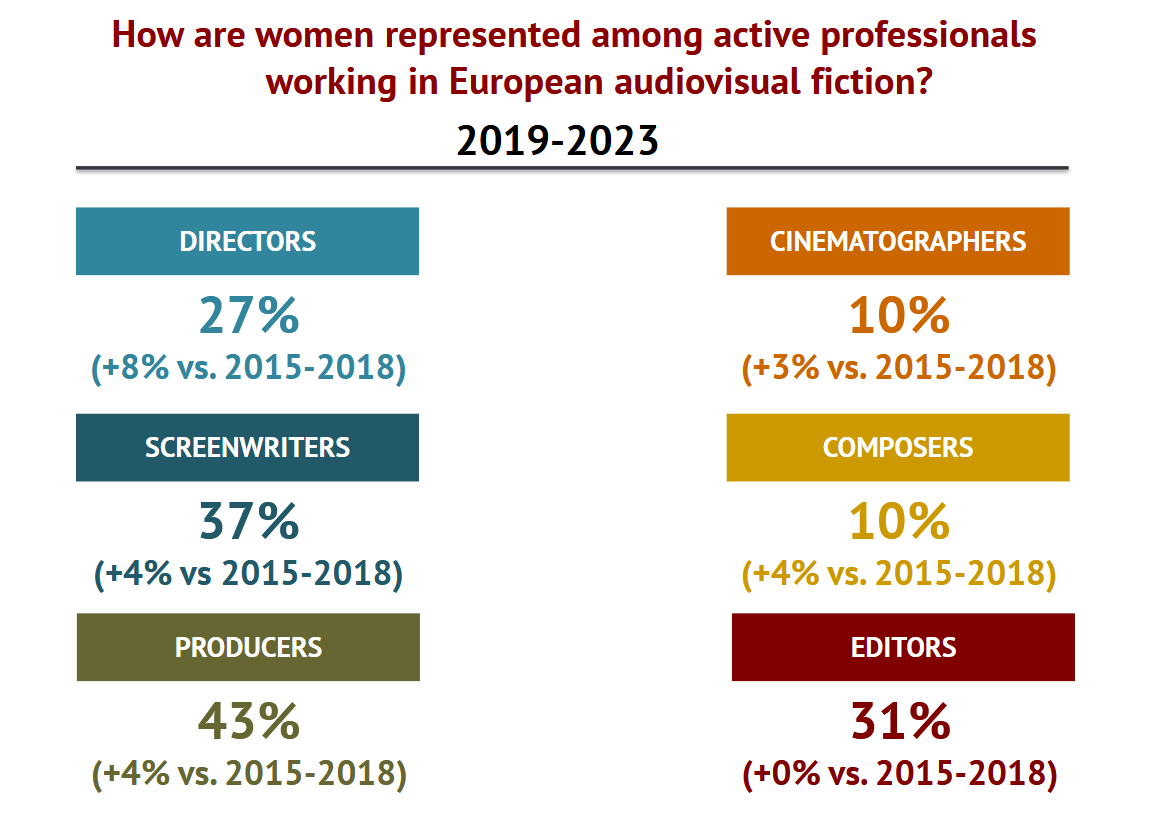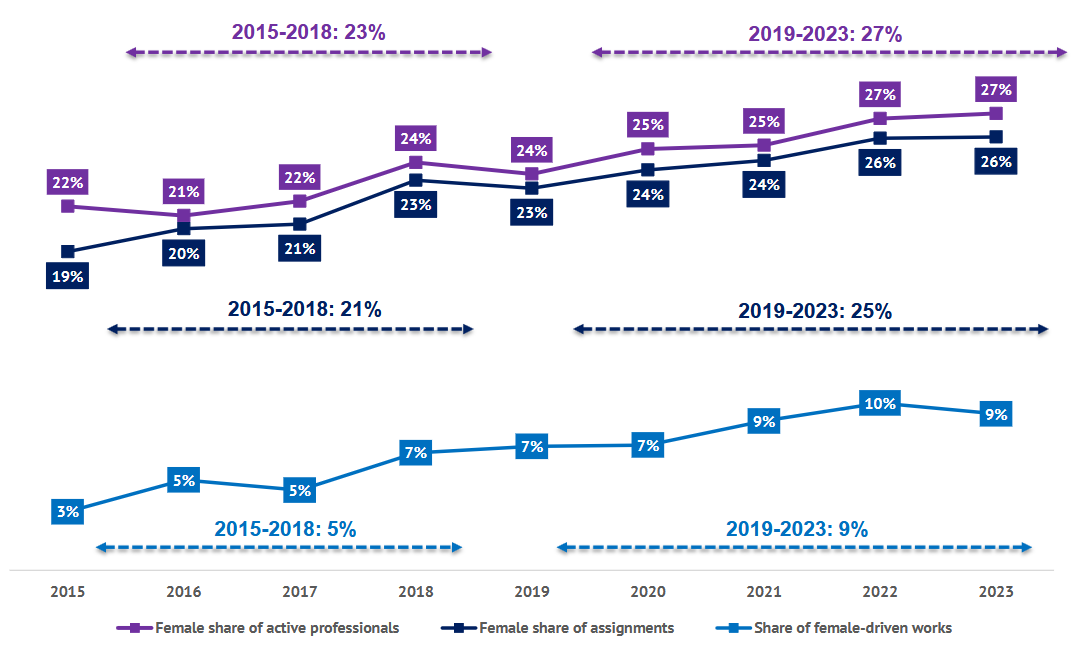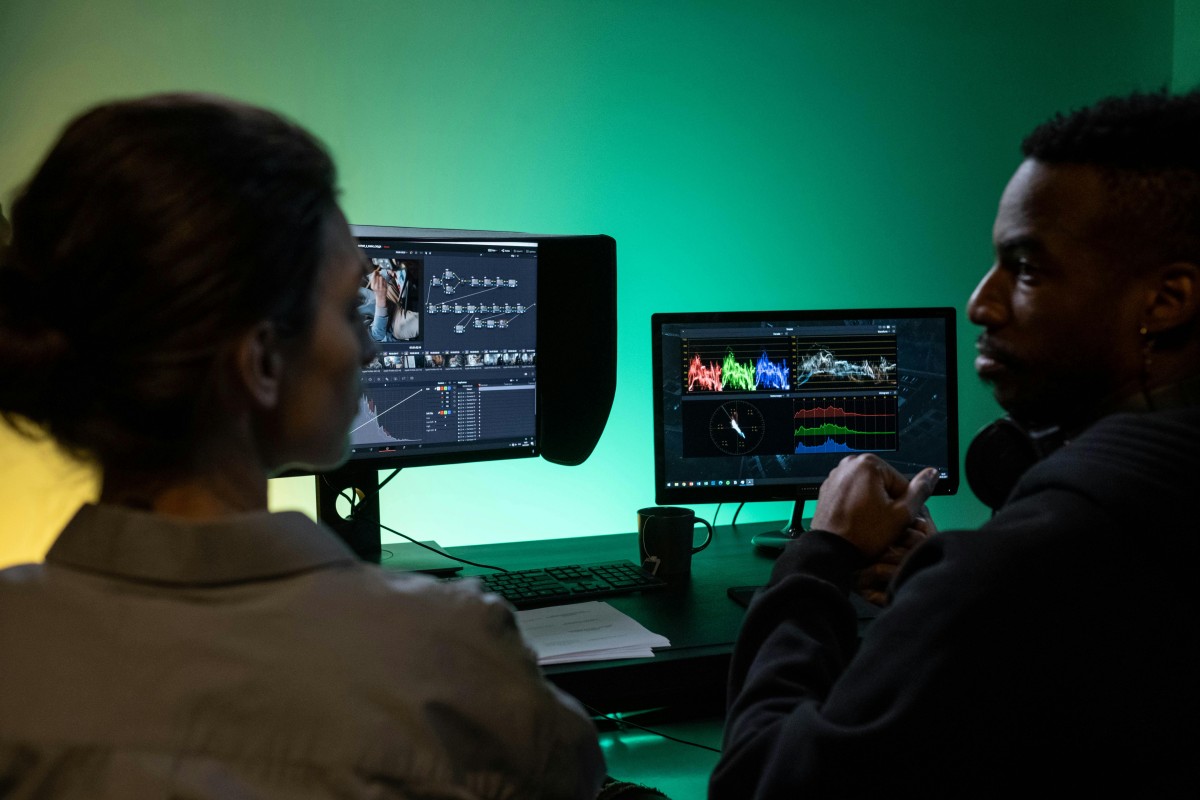The participation of women in six professional roles in TV and SVOD (subscription video on demand) production in Europe has increased since 2015, but only moderately. According to the new publication of the European Audiovisual Observatory between 2019 and 2023, the share of female professionals in all roles in TV and SVOD fiction is 27%, an increase of 4% compared to the previous reporting period (2015 - 2018), where the same share was 23%. Applying the average growth rates of female presence over the last nine years and taking all roles together, gender parity in European TV and SVOD fiction production would be reached in 2046.
Some progress has been made in the role of director, which is characterised by an average proportion of women (+8% more women between 2015-2018 and 2019-2023). Progress has been slower in other professional roles. Roles with an already very low proportion of women, such as composers (+4%) and cinematographers (+3%), have improved slightly. Roles with an above-average share of women, such as scriptwriters and producers, also changed slowly (+4% each). The share of female editors stagnated between 2015-2018 and 2019-2023 (+0%).

The various indicators used by the European Audiovisual Observatory to measure gender inequality in audiovisual fiction production reveal three cumulative factors for most of the roles assessed in the report:
- A low proportion of women in the active population of professionals.
- Fewer assignments for active female professionals.
- More work shared with other professionals (e.g. female scriptwriters co-write more often than their male counterparts).
The gender gap varies by profession. Between 2019 and 2023, the share of female professionals is higher for producers (43%) and writers (37%), close to the average for editors (31%) and directors (27%), and significantly lower for composers (10%) and cinematographers (10%).

Female professionals seem to be more represented when several professionals work together in one role, as is the case for producers and writing teams. Conversely, women tend to be under-represented when the role is generally held by a single professional (e.g. directors or cinematographers).
However, even in roles where multiple professionals are responsible for writing or producing a work, the teams are overwhelmingly led by male professionals. For example, between 2019 and 2023, while women writers accounted for 37% of the writing of audiovisual fiction, women-led teams accounted for only 26% of all writing teams, compared to 59% for male-led teams and 15% for gender-balanced teams.
By way of illustration, applying the average growth rates of female presence over the last nine years would mean that gender equality would be reached in 2030 for producers, 2035 for directors, 2036 for writers, 2063 for composers and 2103 for cinematographers. Gender equality for female editors would not be achieved at all at the current rate.
Taking all roles together, gender parity in European TV and SVOD fiction production would be achieved in 2046.
However, there is a more encouraging aspect that may help to achieve gender parity sooner. Women in one role are more likely to work with other women; for example, the proportion of female writers or producers is significantly higher when the director is a woman, and the same applies to works written or produced mainly by women. Progress in one role is therefore likely to have a positive impact on the others.
The underlying data used in this report was provided by Media-press.tv. Media-press.tv systematically reviewed the schedules of over 200 TV channels and on-demand services to identify original European fiction. The services selected are the TV and SVOD audience leaders in the countries covered. The data provided by Media-press.tv was supplemented by the European Audiovisual Observatory. The scope of the report includes the analysis of six professional roles: directors, writers, producers, cinematographers, composers and editors. The sample comprises more than 320.000 credits.
Read the report here.
--
Photo credit: Ron Lach
Photo source










